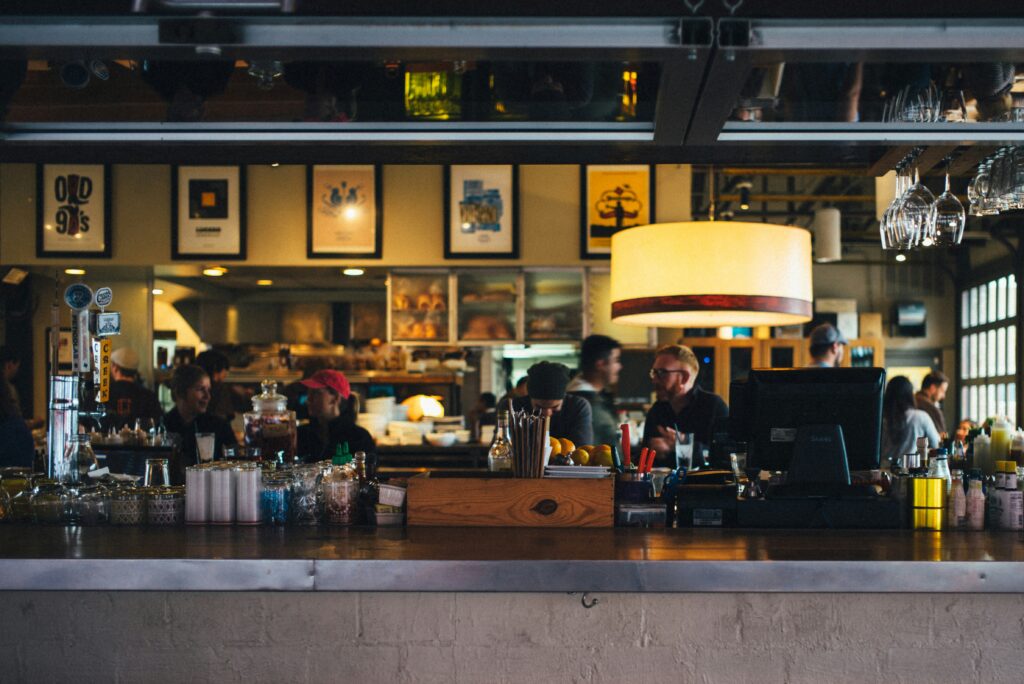Stay in the loop
Table of Contents
- 1 What is inventory turnover?
- 2 How do you calculate inventory turnover?
- 3 What does inventory turnover tell you?
- 4
- 5 What is a good inventory turnover ratio?
- 6 Is high inventory turnover good or bad?
- 7 Inventory Turnover vs. Days Sales of Inventory
- 8 How to optimize inventory turnover ratio
- 9 Need help with inventory management?
What is inventory turnover?
Inventory turnover refers to how often a restaurant sells and has to restock their inventory. A high inventory turnover means you are selling things at a quick rate. It also gives you insight into your purchasing habits and whether you are over or under buying your inventory.
When calculating inventory turnover ratio, you should be hoping to see a high number as it will indicate that your business is doing well and your inventory is sold quickly in any given time period. This means that there is a demand for what your company is selling.
How often should a bar take inventory?
How do you calculate inventory turnover?
In order to accurately calculate inventory turnover, there is a simple formula that you can use. To be able to calculate stock turnover, you need to know the cost of goods sold (COGS) in the period of time that you are calculating for as well as the average cost of your inventory for that same time. When you have this information, you can input your numbers into the inventory turnover formula.
Inventory turnover formula
Inventory turnover = Net sales/Average inventory at selling price
To calculate inventory turnover you have to divide the costs of goods sold (COGS), by the average inventory value for the given time period. For example, if in a 365-day period you sold 2 Million $ worth of goods, and your average inventory price was 200,000 $, here is how you should calculate the inventory turnover:
2,000,000/200,000 = 10
Your inventory turnover rate is 10.
What does inventory turnover tell you?
Inventory turnover can tell you a lot of different things about your restaurant and can give you insights about where your financials are going right and wrong, making it an important ratio to calculate.
A company’s inventory turnover is actually a good indicator of how well the business is doing and how efficient it is. Indeed, your inventory turnover tells you how much and how often you are selling things in your restaurant or bar. On top of this, it lets you know if your inventory management is in line with what it should be in order to maximize your profits. For example, if your inventory turnover is very low, you are buying too much stock and not getting rid of it fast enough.
This ratio is extremely helpful for businesses as wasting inventory and stock is essentially like throwing money out the window. If you can get your inventory turnover ratio to a good number, and adjust your stock levels, you will be able to save money and resources in the process.
What is a good inventory turnover ratio?
An ideal inventory turnover ratio depends on the industry that you are in. For bars and restaurants, you generally want your inventory turnover ratio to fall anywhere between 4 and 8 to make sure your business is performing well in the wider landscape of the food and beverage industry.
Is high inventory turnover good or bad?
Usually, it is better to have a high inventory turnover as opposed to a low inventory turnover because a high inventory turnover highlights success in multiple areas of your business. If your inventory turnover is high, it means that you are selling things at a rate that aligns with what you are buying. Therefore, it suggests that you are not wasting money on overbuying food that is ultimately going to get thrown away.
On the other hand, if your inventory turnover is low it suggests the opposite. Low inventory turnover is a sign of overbuying and therefore overspending on food and ingredients that are not being sold. It also suggests that the sale of your goods is low and your company sells less than they buy, which greatly affects profit margins.
Inventory Turnover vs. Days Sales of Inventory
Days sales inventory provides you with a more specific look at your inventory as opposed to a yearly overview. It helps you determine how long it takes to turn inventory into sales. The formula to calculate days sales of inventory is as follows:
DSI = (Average inventory/ COGS) x 365
Unlike inventory turnover, a lower DSI is more desirable than a higher DSI. A lower DSI means it has taken you less time to turn inventory into sales so you are generating profit quicker.
How to optimize inventory turnover ratio
Having a high inventory turnover is exactly what you want for your restaurant business. Here are some expert tips to help you maximize your inventory turnover ratio.
Increase demand
The best way to increase demand is to develop a solid marketing strategy. Thanks to strong marketing campaigns, you will be able to generate enough buzz to increase foot traffic. Moreover, offering your customers’ loyalty programs and exclusive offers will increase your average ticket as well as your inventory turnover.
Inventory management
Inventory management is equally as important as it is the other half of the inventory turnover formula. You should invest in restaurant inventory software to simplify inventory management and stay on top of your inventory usage and buying habits. It will also allow you to identify your most popular menu items.
Here are some key advantages of using the Rapid bar app:
- Batch recipes
- Simplified purchasing
- Access to data anywhere
- Better collaboration
- Inventory tracking directly in the app
- Identification of bar and restaurant liquor errors
- Automated supplier orders
- Labor costs savings
- Better management of your liquor orders and sales
- Seamless connection with your POS system
- Better control over your food cost
- Intelligent ordering to avoid overstocking
- Precise KPIs for each product
- Detailed variance reports
6 restaurant inventory tips to run your business successfully
Review prices
It is important to regularly check, review and revise both your menu pricing as well as your supply pricing as it has quite a large influence on your inventory turnover ratio. The main aim is to increase the amount you are making whilst decreasing the amount that you are spending on supplies.
In order to do this, you can invest in an inventory app to have access to regular reports related to menu analytics as well as negotiate with your suppliers and review your menu (which are the items that are not really selling?).
Encourage pre-ordering
Although it is not always easy to get customers to pre-order in the restaurant industry, the pandemic has actually made this a lot easier. Since many restaurants had to shut their doors, many turned to online delivery to keep afloat. Pre-ordering can help you optimize your restaurant’s inventory.
Improve forecasting
Forecasting is essentially predicting what is going to happen to food trends in the wider context of the industry as well as within your own restaurant. If you can keep up with what the newest trends are, you can adapt your menu and predict the popularity of different menu items based on past orders. This is also applicable to seasonal trends. For example, salads are far more popular in the summer than any other time of the year so you should buy extra inventory for this menu item in the summer and less in the winter.
Need help with inventory management?
Inventory management is a key part of making sure that your restaurant’s inventory turnover is as high as it can possibly be. However, as inventory management needs to be constantly reviewed, hiring an individual to take care of this task can be costly. This is where RapidStock comes in!
Our system affords you better control of your food costs. You can see what exactly it is that you are running low on based on your sales for the week. It is an extremely innovative and simple solution that will save you a lot of money down the road. What makes RapidStock a great solution for restaurants and bars is the fact that you can seamlessly link and manage all your locations remotely.
About the author
Fabrice Tremblay
Fabrice founded RapidStock in 2017 after working as a production planner for almost two decades. Briefly a bar owner and tech lover, he was inspired by the challenge of helping passionate entrepreneurs in the bars and restaurants industry.
When not working on RapidStock, Fabrice enjoys cooking and spending time outdoors with friends and family.
More tips and tricks



